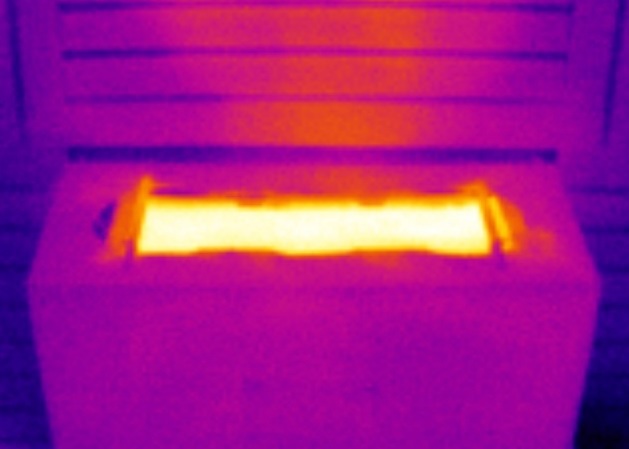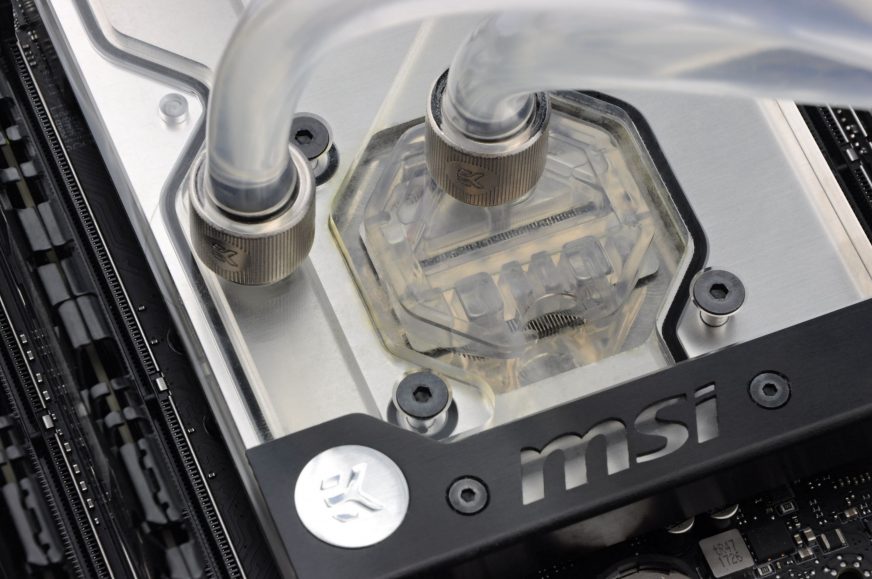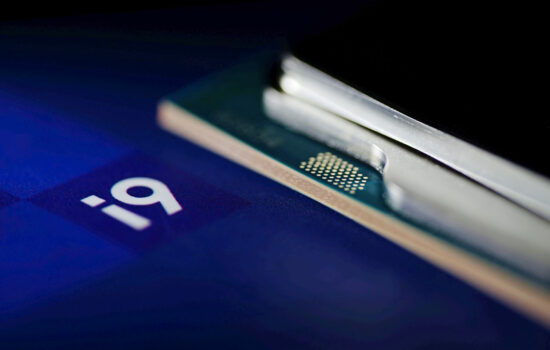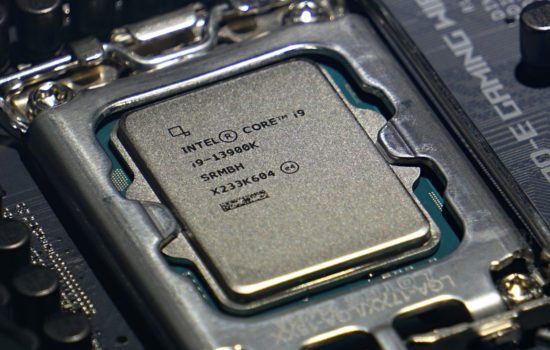Conclusion
For LGA 2066, liquid cooling is more beneficial than for any other platform before. Especially for Core i9-7980XE. Compared to EKWB full cover monoblock with a decent engine and evaporator, even NH-D15 looks like a dwarf. Not only does the liquid cooler open up for higher frequencies, but it also significantly improves the operating features with settings that can be barely handled by conventional coolers.
Conclusion
Those of you who like to examine charts closely have probably already found what they were looking for, but let us make a little conclusion together. Compared to the original heatsink, the water block will lower VRM temperatures by 20 – 35 °C, it depends on the overclocking. With a VID of 1.306 V (4.5 GHz), heating is similar to the one with factory settings (1.029 V). In other words, the EKWB solution provides quite a reserve, and rather than overheating of VRM you will encounter a CPU cooling limitation – after delid, EK-X360 with EK-FB could handle maybe 750 W. In our case, the limit of Ci9 (no delid) was 540 W (1.306 V and 4.5 GHz). With the same voltage and 100 MHz more, the consumption increased by about twenty watts. The CPU probably would manage 4.6 GHz even with less aggressive voltage, but core temperatures (exceeding 100 °C) were the limiting factor.
The cooling performance is critical in every situation, here’s why – while NH-D15 managed to cool 4.4 GHz with 1,141 V, the EKWB set required 10 mV less. This means, in addition to minus 15 W due to less heat output, another -7 or -8 watts thanks to the lower VID. But the key thing is that a lower voltage is needed for a stable CPU performance, which is crucial during extreme overclocking.

The results with factory setting and auto voltage control are also worth mentioning. It was the only mode that had lower VRM temperatures (and CPU temperatures, of course) with higher consumption. MOSFETs had better conditions and they performed accordingly. The previous test Ci9-7980XE s NH-D15 showed that tuning of processor makes sense also for people who are not interested in overclocking. If you manage to find the lowest possible Vcore for a stable operation of your system, you can easily reduce the consumption of your configuration by 100 W.
- Contents
- How we were testing
- Temperatures of CPU and from internal sensors
- Heating of the VRM casing and the liquid
- Consumption (+ VID)
- Performance tests
- Conclusion











